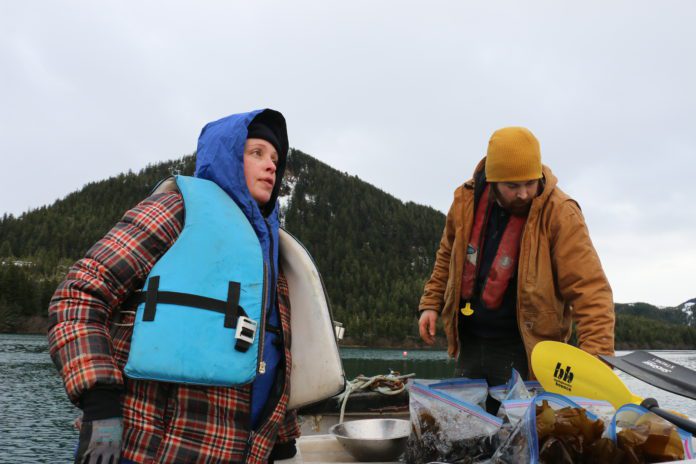
By Bella Fertel
For The Cordova Times
Kelp farmer Cale Herschleb has one of the more unique commutes in the U.S.
After leaving his mooring in the harbor in Cordova, the Celtic Lady — Herschleb’s 45-foot fishing boat — tows along a small skiff while battling powerful wind gusts and currents for two hours before reaching his kelp farm out on Prince William Sound.
Today the sea is peaceful, but high winds and storm surges can make this a treacherous ride, especially in winter.
On the surface, a kelp farm doesn’t look like much. But under the water lies a carefully constructed three-dimensional rectangular grid of parallel 400-foot lines growing a small forest of ribbon and sugar kelp. The seaweed grows about four to six feet below the surface – a small weight is attached to the line to help keep the kelp completely submerged while the tide ebbs and flows.
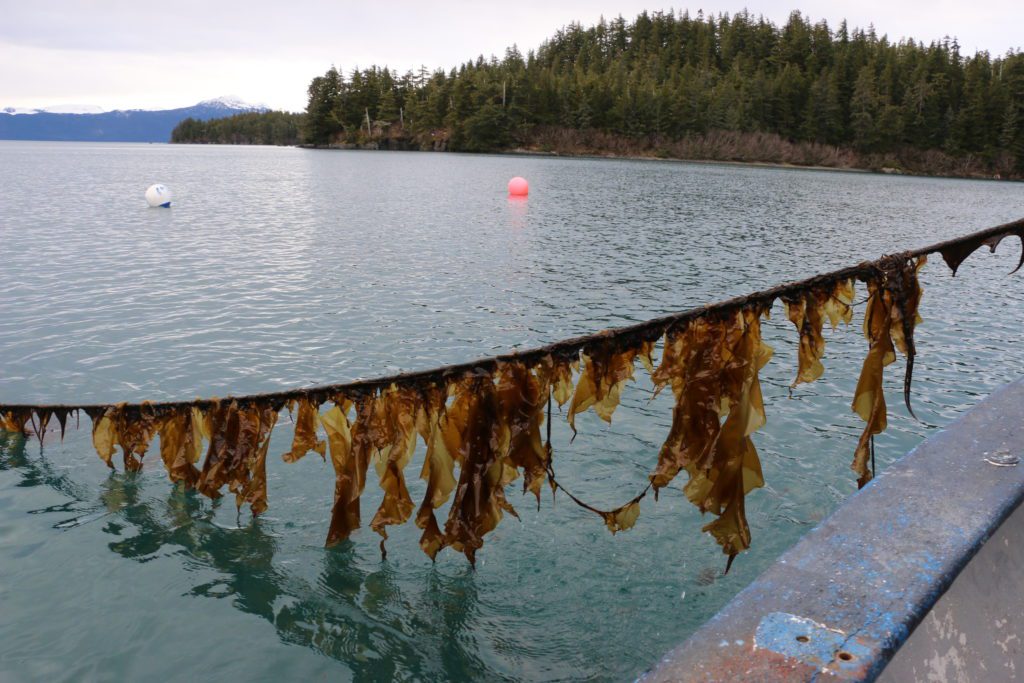
Modest as it may seem now, these undersea operations have big potential for both economic and environmental benefits. Kelp can be turned into all kinds of useful products – from food additives like carrageenan and agar, to fertilizer, to beauty products, and even bioplastics.
Although most of the seaweed grown for human consumption is farmed across the Pacific in Asia, the kelp mariculture industry is taking off in the U.S. – both in Alaska and the Lower 48. Seaweed farming is the fastest-growing aquaculture sector in the United States, and the state of Alaska is at the forefront of this booming industry.
Mariculture enthusiasts are hoping that a growing kelp industry could help bolster the economies of communities like Cordova that rely on the ocean for their livelihoods. Many of the skills and gear that folks in the commercial fishing industry have are easily transferable to kelp farming. And while most other resource-based industries in Alaska — like logging, commercial fishing,
and fossil fuels are extractive — kelp farming has the potential to be sustainable, and possibly even restorative to the environment.
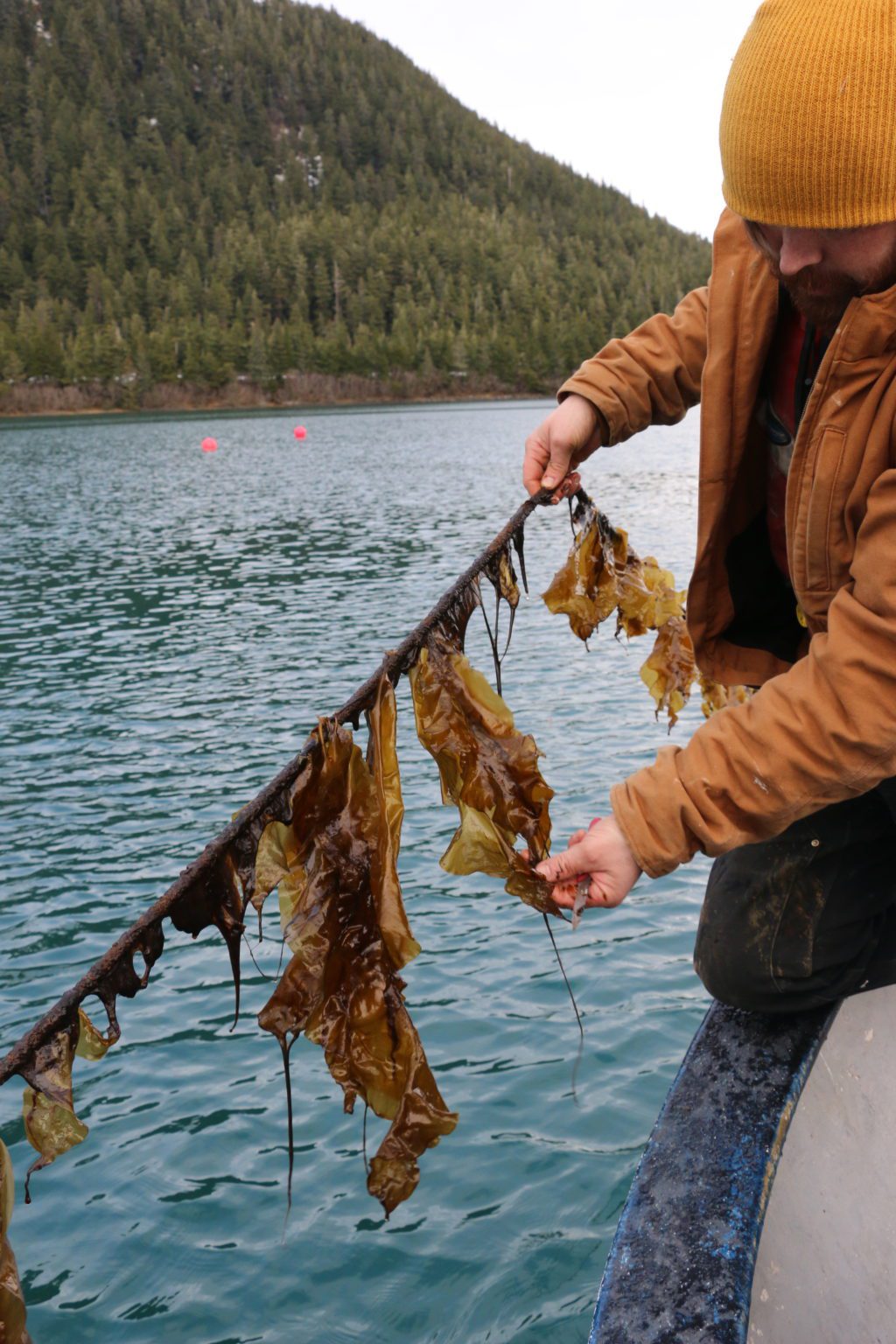
Restoring the Sea
This past March 24 marked the 33rd anniversary of the day the Exxon Valdez oil tanker ran aground in Prince William Sound, creating the worst oil spill in U.S. waters — until the Deepwater Horizon oil spill of 2010 — affecting 1,300 miles along Alaska’s Southern Coast. The spill had a huge impact on wildlife in the Sound, killing seabirds, sea otters, seals, whales, and fish. A few years after the spill, the herring in the Sound started to die off, ending the herring fishery in Cordova. More than 30 years later, you can still find oil from the spill if you search for it beneath the surface of some beaches.
After the initial cleanup, and right up to the present day, researchers have mostly focused on monitoring and researching how wildlife has, or hasn’t, recovered on its own. Interestingly, some of the areas where aggressive cleaning measures were enacted — using tools such as high-pressure and high-heat hoses, the deployment of dispersants, and burning — have been the slowest to recover. A few years after the spill, herring stocks collapsed in the Sound and with it the main source of income for communities of the Prince William Sound. The stocks have still not recovered to pre-spill numbers, and herring have not been commercially fished in Cordova since the late 1990s.
The ability of kelp to absorb carbon dioxide and turn it into oxygen using photosynthesis, like plants on land, makes some believe it can help the damaged environment of Prince William Sound. Seaweeds are effective at absorbing and filtering nitrogen, heavy metals, and other contaminants from the waters surrounding them.
Meanwhile, waters all over the world are becoming increasingly acidic because of the increasing amounts of carbon dioxide they are absorbing. But marine plants and coastal ecosystems are actually much more effective than terrestrial plants at sequestering carbon and thus mitigating climate change. Mariculture enthusiasts are hoping to utilize this property of kelp to help mitigate the negative effects of warming and acidifying waters in Prince William Sound.
Scientists have observed a “halo-effect” of lower levels of carbon dioxide, lessened acidity, and reduced marine calcifier stress in the waters immediately surrounding kelp farms. A five-year study looking into farming sugar kelp as an ocean acidification mitigation strategy through “improved seawater conditions” in Puget Sound found that “farmed kelp offers some potential for removing carbon and nitrogen from seawater at harvest,” and that these kelp farms may reduce the adverse effects of acidification on calcifying organisms like oysters and mussels on the farm.
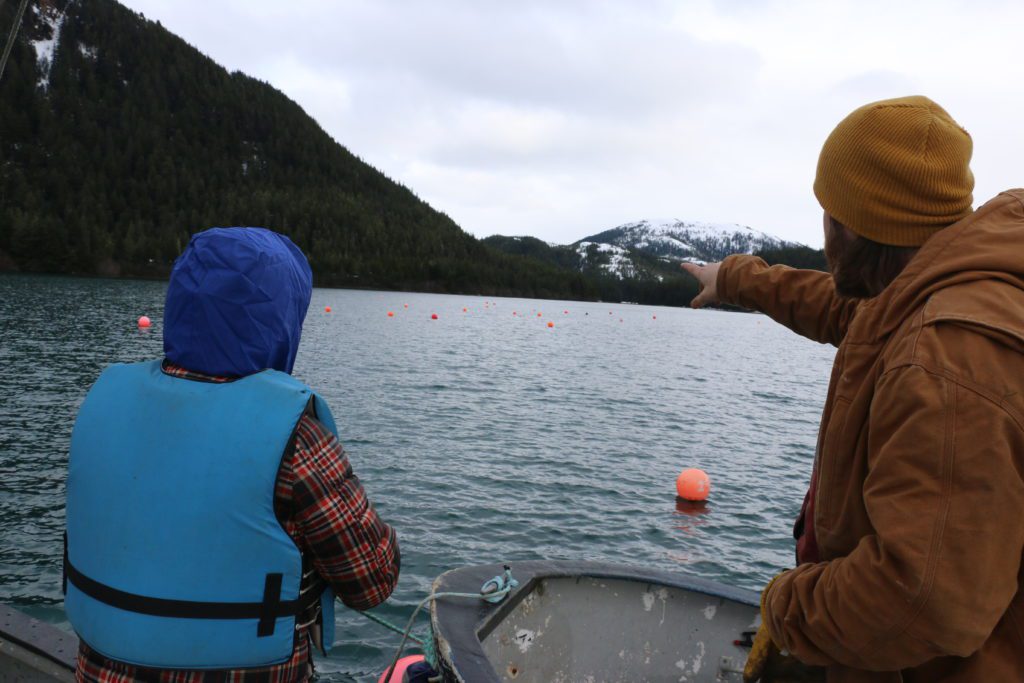
Unlike other crops, kelp requires zero “inputs” like freshwater, feed, or fertilizer to grow. To compare, it takes at least 3,000 gallons of water to grow one ear of corn and at least 10,000 gallons to grow one bushel of soybeans — plus many pounds of added fertilizers and pesticides.
In fact, kelp can be used as a bio-fertilizer itself for other plants instead of synthetic chemicals. Studies have shown that kelp-based fertilizers can increase the size of plants and improve a crop’s ability to absorb nutrients like nitrogen and potassium. Researchers have also found that replacing a portion of cattle feed with kelp reduces methane emissions by more than 80% — no small feat considering livestock are responsible for more than 14.5% of global greenhouse gas emissions.
But of course, kelp farms need to be profitable if they’re also to be financially sustainable.
Profits and Permits
This is the first season that Herschleb and the farmers at Royal Ocean Kelp Company have been able to get their kelp lines in the water. Their kelp farm in Windy Bay offshore Hawkins Island is one of two commercial kelp farms growing kelp this season in Prince William Sound.
The amount of manual labor and technical know-how required to build a kelp farm is a huge barrier to entry for folks wanting to get into the kelp mariculture industry. Luckily, both Thomas and Herschleb had years of experience in the fishing industry and a lot of the gear needed to start the farm – most importantly, the Celtic Lady.
Start-up costs — perhaps most importantly, getting a boat and paying for the gas to go out and visit your farm — are a barrier for those interested in the idea of farming kelp but who can’t afford to sink tens of thousands of dollars into a farm that will take years to start turning a profit.
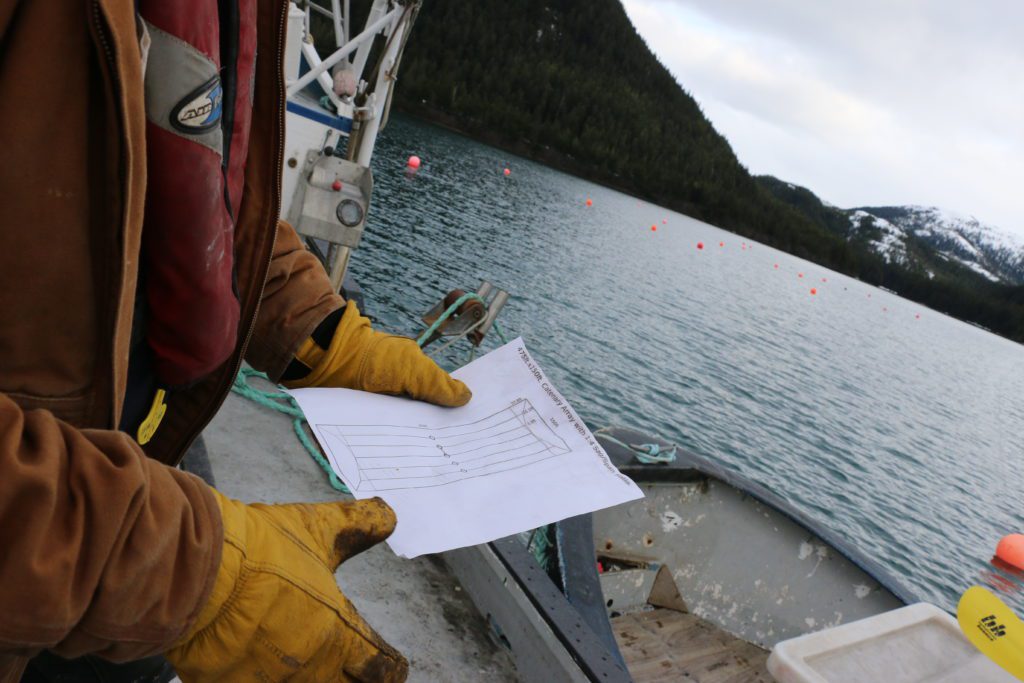
Getting seed to start the farm has also been tough. According to Alaska state regulations, farmers need to harvest spores, or sori, from kelp found within 31 kilometers of their farm site. The process of extracting the spores and getting the kelp to start growing on substrate is technical and laborious, so most farmers get their seed from a nursery instead of trying to inoculate the substrate themselves.
The owners of the other commercial farm harvesting kelp this year in the Sound, Skye Steritz and Sean Den Adel at Noble Ocean Farms, are still working on fixing up the boat they bought to run their farm. This season, they’ve had to rely on friends and community members to take them out to Simpson Bay to check on their crop.
“Nobody can do this alone, you need a support system,” Steritz said. “We didn’t realize how labor-intensive it would be and how much there is to still learn about all the different facets of this nascent industry.”
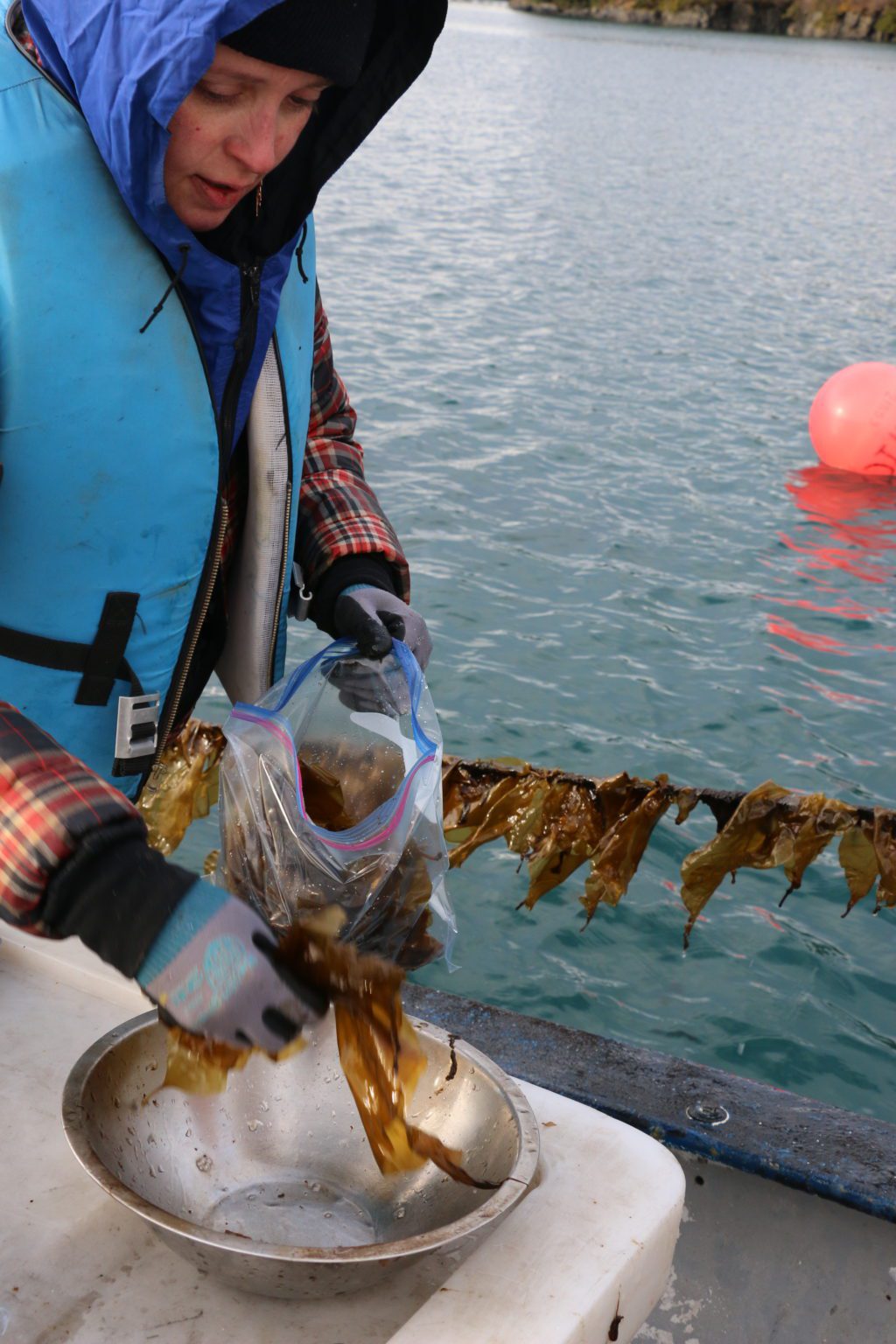
Both commercial farms in Prince William Sound have lost some of their kelp lines this year. Noble Ocean’s single line of bull kelp got taken out by ice, and Royal Ocean lost two out of their three 400-foot-long lines of ribbon kelp. For a small farm, that’s a pretty big hit of its profit. Still, both farms are enthusiastic about getting their first harvest out there to folks in town and around the state.
Permitting is also a challenge for farmers, who say that the process of obtaining permits to run a kelp farm is long, confusing and cumbersome. It took about two years for Thea Thomas, who co-owns and operates the Royal Ocean Kelp Company with Herschleb and his wife Catherine, to complete the permitting process for their kelp farm. Finally, in October of 2021, Thomas and the Herschlebs were finally able to plant four lines of sugar kelp and three lines of ribbon kelp.
The wait to get their farm approved seems to be emblematic of the industry at large. According to the Alaska Department of Fish and Game, it takes about two years to actually start farming kelp after applying for a permit, due to bureaucratic backlogs, incomplete forms, and all of the environmental considerations that go into selecting a mariculture site.
The state of Alaska is limiting the total acreage of kelp farms so that no more than one-third of bays are taken up by kelp farms. In Alaska, mariculture permits last 10 years. The annual lease fees are determined by the size of the farm site, and range from $450 to over $13,000.
Kelp farmers may need to apply for several other permits — like stock transport and acquisition, and approval as a seed distribution source — to get an operation started.
“Now we’re just trying to figure out if we’re going to be able to sell it,” Thomas said. “What I don’t think people have given enough thought to as these farms get started is to develop the processing …and the market side of it. And so that’s been a lot slower to develop.”
There are seven farms scattered throughout Prince William Sound that have already been approved for 10-year leases to grow kelp, and there are six permits pending.
The farms come in a range of sizes: the smallest permit is for the 2.89 acres in Windy Bay, and the largest is for 22.04 acres. That’s about the size of 18 football fields. Right now, there are two pending applications for farms larger than 100 acres.
Mariculturalists in the Prince William Sound are growing three kinds of kelp: ribbon kelp (Alaria marginata), sugar kelp (Saccharina latissima), and bull kelp (Nereocystis luetkeana).
Two commercial farms, Royal Ocean Kelp Company and Noble Ocean Farms, have their kelp lines in the water and are in the midst of selling their first harvest.
The first commercial kelp farms in Alaska went into the water in 2017, and since then farmers across the state have received tens of millions of dollars in federal and state grants to help set up farms. Right now the money the kelp industry makes is small potatoes compared to the commercial fishing and fossil fuel industries in Alaska, but kelp farms are seeing a tremendous amount of growth. Two years after the state’s first commercial kelp harvest in 2019, the amount of kelp harvested has more than doubled.
One of the reasons why mariculture enthusiasts say that Alaska is perfect for kelp farming is because of the potential to utilize the existing infrastructure for the commercial fishing industries for kelp.
“When we look at our economy and our industry and the strengths we have here — the landscape, the skillset of the people, the infrastructure we have built here, mariculture makes a lot of sense,” said Cathy Renfeldt, executive director of the Cordova Chamber of Commerce.
“There’s a lot of overlap in the skillset, knowledge base, and infrastructure needed to do commercial fishing and mariculture in tandem, especially when you look at the seasons.”
But folks haven’t yet figured out how to utilize operations to process kelp and package it for the broader market, or to convince other processors to come in and package their product.
Fisheries consultant Tommy Sheridan has some ideas about how to utilize existing infrastructure in the area for all things kelp. For example, the neighboring community of Valdez has nine huge grain silos that are not in use – Sheridan thinks that they could potentially be used to ferment fresh kelp and create a shelf-stable product. He also has some ideas to harness waste heat from other businesses in Cordova in order to dry kelp without the cost — or carbon footprint — of other drying methods, like convection ovens.
Some are also worried that without the proper planning, kelp mariculture could follow the path of the fisheries, where most of the profits leave the community and go to the big fish processing companies with headquarters located in the Lower 48 states.
Impacts Above and Below
We don’t yet know the full effects large-scale kelp farming will have on Prince William Sound long-term.
Alysha Cypher, a postdoctoral researcher at the Prince William Sound Science Center, is a part of a research project to assess the impacts of all the kelp farms on the ecology of the water around them. The Mariculture Research and Restoration Consortium program will be looking at things like water quality, carbon dioxide levels, oxygen levels, and acidity – all of which affect the organisms that live in the water. Cypher will look into how the kelp farms will affect the ways that animals in the water interact with each other.
“A kelp farm could be habitat for either young fish or fish that are hiding,” Cypher said. “If there’s fish being attracted to a big kelp farm, birds and mammals will find it too.”
The PWSSC will be partnering with several of the farms in the region to collect data on farms that are growing kelp, shellfish, and a combination of the two. Those farms will send back information about the acidity, salinity, temperature, concentration of carbon dioxide, oxygen levels, and levels of nutrients like nitrogen in the water.
Several kelp mariculture operations in the Sound will also be doing research of their own. The Native Village of Eyak got funding from the Commission for Environmental Cooperation’s Environmental Justice and Climate Resilience Grant Program to start up their kelp farms, which they will use to research the best conditions and techniques for growing kelp and train interested Tribal youth in these kelp farming practices.
“We don’t want to compete with the commercial farmers,” said Caitlin McKinistry, a biologist working for the NVE to create their mariculture program. “We want to try to help develop the methods and techniques in Prince William Sound, and then open it up for anybody who wants to come and learn how to grow kelp the best way possible.”
Right now, most of the farms in Prince William Sound are small, and scientists think they’re unlikely to have much of an impact on things like improving water quality or helping reverse ocean acidification outside of the bounds of the farm.
McKinstry is optimistic about the potential of kelp to help both the marine and the economic environment, whether it’s in the water as a crop or above ground as a product.
“There’s a lot of promises with seaweed and seaweed products,” she said. “If just one of them pans out, I think it could do pretty amazing things for climate change.”
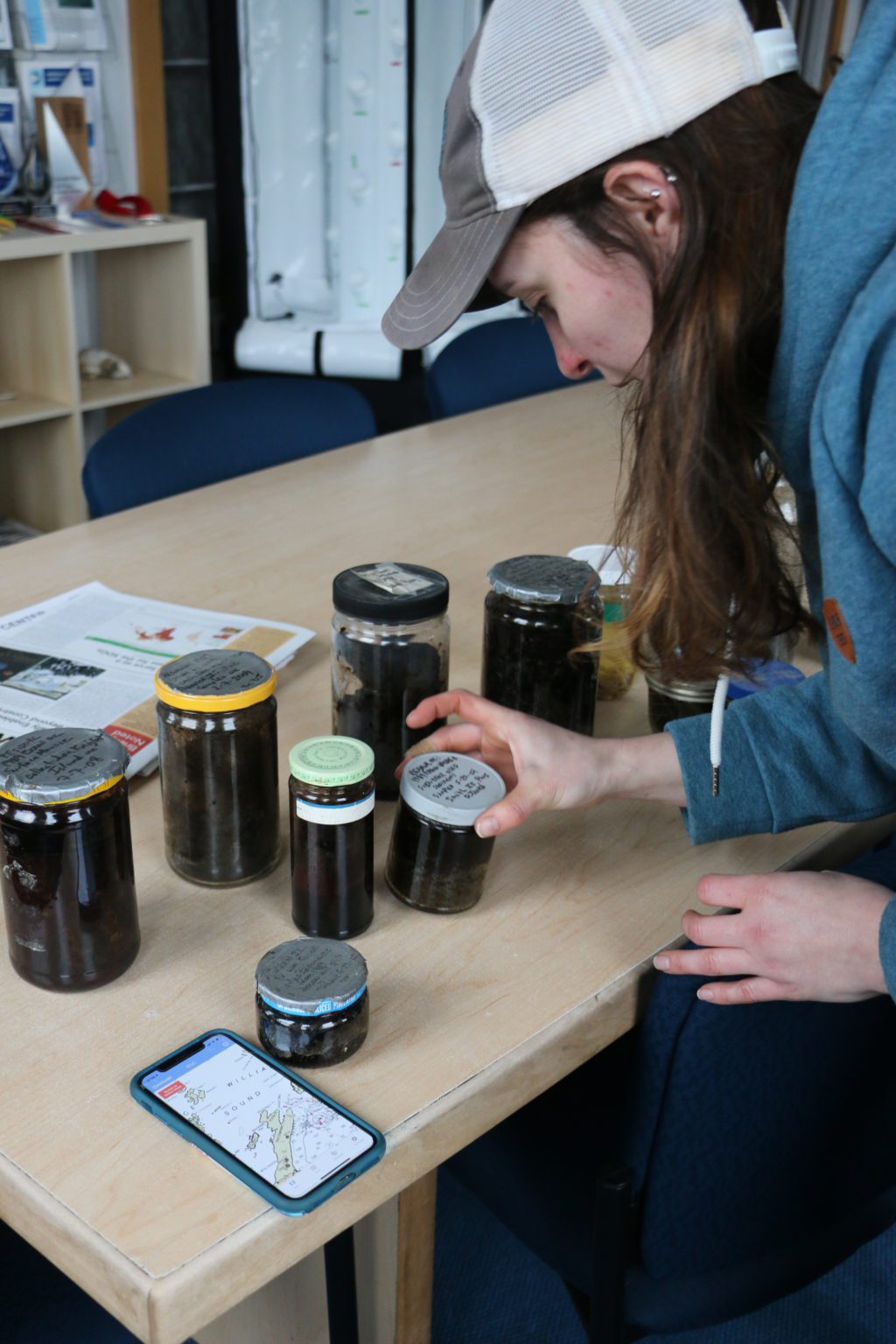
The new kelp monitoring program at the PWSSC is complementary to the existing monitoring and research in Prince William Sound funded by the Exxon Valdez Oil Spill Trustee Council.
Rion Schmidt, the Habitat Restoration Program Manager at the Native Conservancy noted that after the Exxon Valdez spill 30 years ago, “I became an activist when I was up to my rubber boots in crude oil, picking up birds in Chenega and taking them back and very unsuccessfully trying to wash this moosey, goopy crude oil off of them.”
Part of that activism for Schmidt now, and the folks at the Native Conservancy, is to help more Indigenous people get into this burgeoning kelp mariculture industry on the ground floor and to advocate for Native Alaskans to guide the policies that are being put in place to regulate it.
In order for the kelp industry in Alaska to be sustainable or regenerative, sustainability needs to be at the forefront of policy maker’s minds – especially when it comes to developing the infrastructure for harvesting, monitoring, processing and transportation to market.
“One of our considerations is that we don’t want to burn a lot of fossil fuels in order to save the planet,” Schmidt said, “So it’s a balancing act of how much energy output it takes to create a kelp product and get it to market.”
For Alaskan Natives, kelp is not some new superfood — it’s a traditional food source that they’ve been enjoying and harvesting for thousands of years. Now that the commercial kelp industry is picking up in Alaska, Native Conservancy founder and president Dune Lankard wants to make it easier for Indigenous folks to apply for these ocean farms and get a seat at the table when it comes to planning and guiding state policy.
“I really feel like the kelp industry, as fast as it’s growing, that it’s actually a modern-day land claim that’s happening on the ocean,” Lankard said. “And I feel that the Indigenous peoples need to figure out how to organize and start kelp cooperatives and alliances to make sure that they’re in the position to get permits closest to their ancestral villages.”
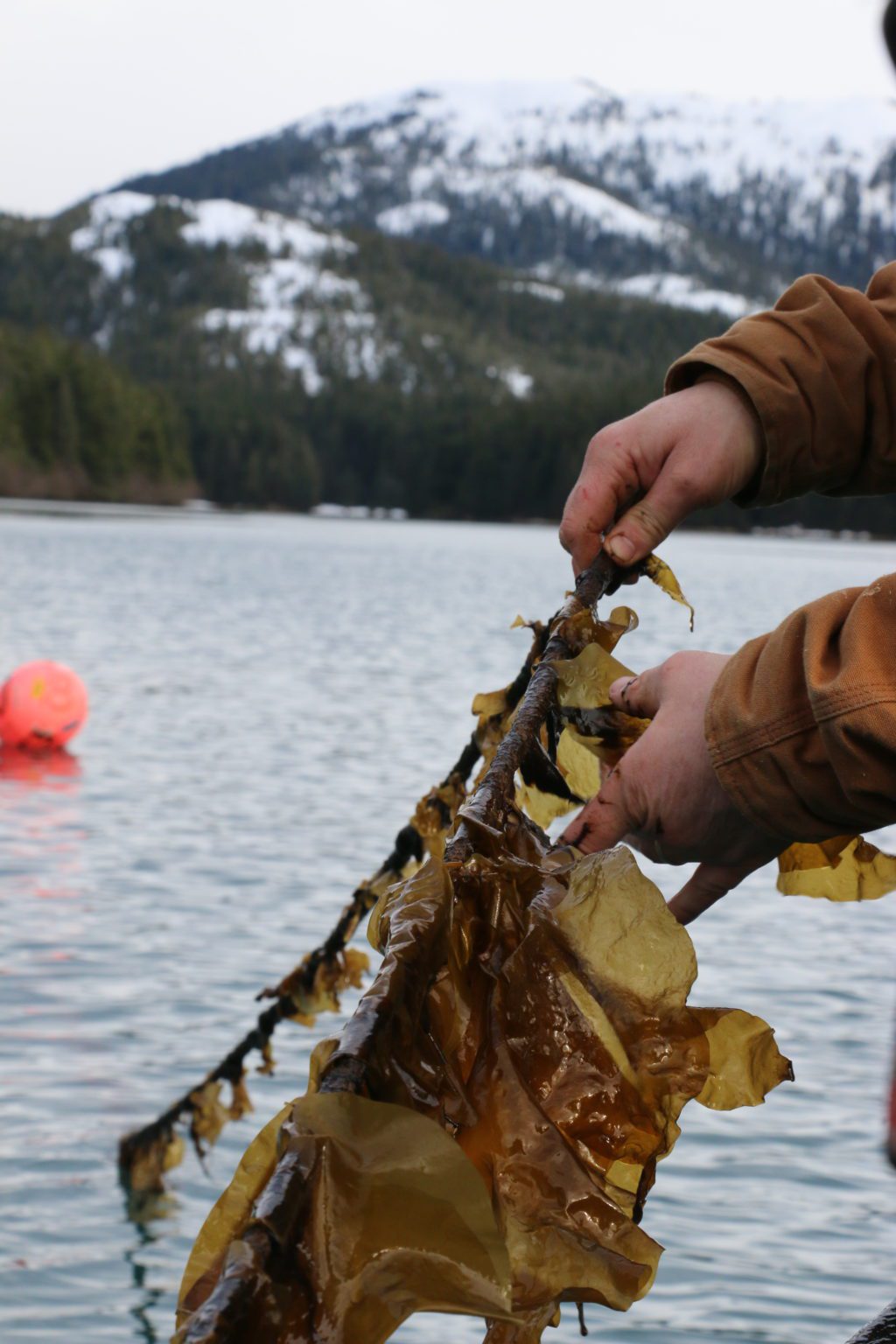
The kelp farms will also help expand the Native Conservancy’s subsistence and food sovereignty program, and provide nutritious fresh sea vegetables for elders. Affordable, quality fresh produce is hard to come by in rural Alaska. Native Alaskans are disproportionately affected by food insecurity compared to the total Alaska population, according to a study by the National Institute of Health.
“The reality is, in this time of climate change rural communities will face severe food hardships and less available good food to keep their people healthy and strong,” Lankard said. To combat that, the Native Conservancy wants to “help communities grow traditional vibrant highly nutritious foods on the land and in the sea.”
Right now, although all of these kelp farms are located in the ancestral waters of Indigenous Alaskans, there is nothing in state policy that gives them the “first right of refusal” to decide whether or not they want to farm kelp. The kelp farmers at NVE Traditional Council and Native Conservancy want to help change that by providing resources and training to get Indigenous kelp farmers on their feet.
“The way the permitting and the way the managements are all going to be sorted out forever is going to be determined by the people who get into the industry first and establish those precedents,” said John Whissel, the director for NVE’s Department of the Environment and Natural Resources. “It’s sort of about keeping space for our members in this industry as it develops and not have them pushed to the side.”
The Native Conservancy will train prospective farmers on the best kelp-growing techniques, provide assistance with the permitting process, and help subsidize some of the start-up costs — like providing seed from their mobile kelp nurseries. The Native Conservancy is also growing kelp in the Sound for research purposes and monitoring the farm’s blue carbon effect on the waters around them in order to help inform their carbon sequestration programs.
“This is a solution that will take time,” Lankard said. “But if there are good-paying, blue-green economy jobs that are actually helping bring people back, then you’re going to re-localize lost ocean economies that have been lost to the seafood industry and actually help revive these communities.”
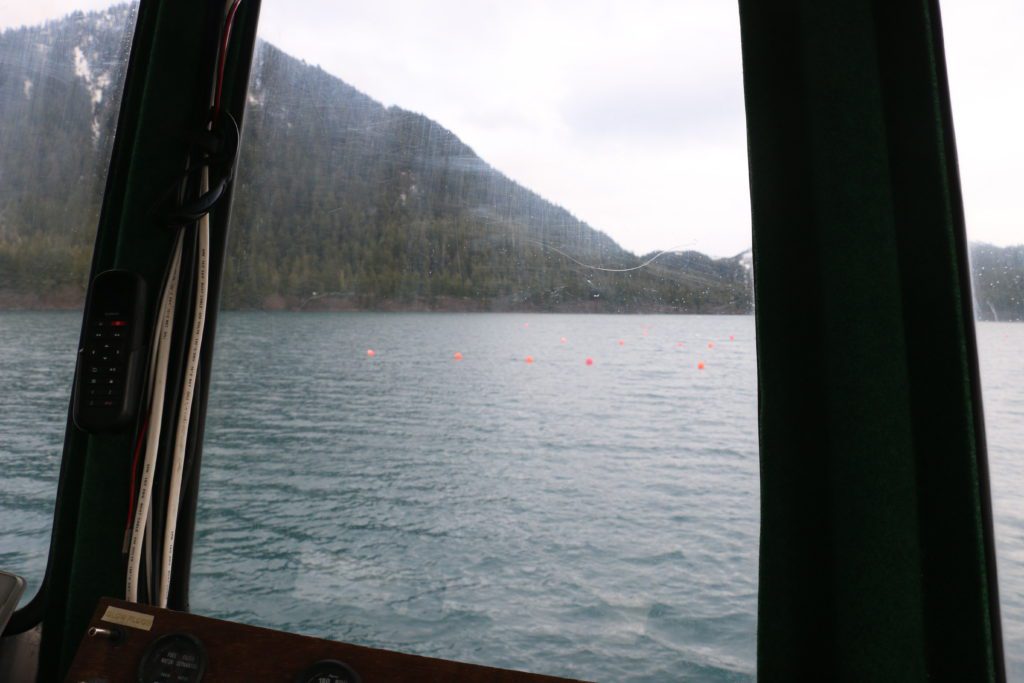
Bella Fertel is an aspiring environmental journalist and photographer. Fertel recently graduated from the UC Berkeley School of Journalism, where she reported on kelp mariculture in Alaska for her Master’s thesis.





